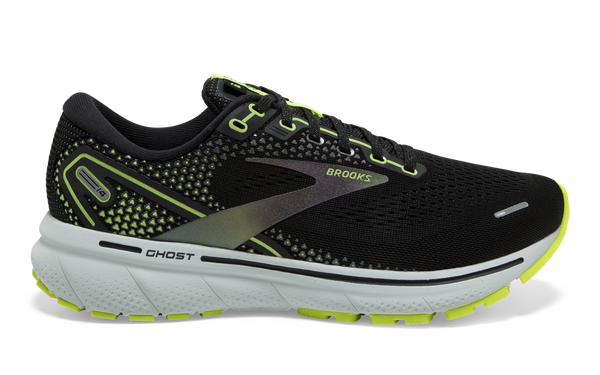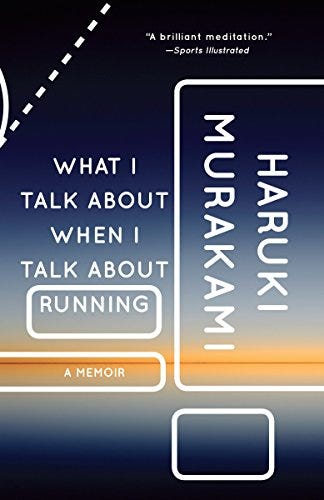For the longest time, I was convinced my feet were that of a circus clown’s; long, flat, and, as one UCONN student once shouted at me from his truck at the Borders parking lot back in the summer of 2004, “floppy as f***.” Turns out I was wrong – well, mostly wrong – but it would take more than a decade to understand both the shape of my feet, and the correct size/shape footwear to slip my “clown feet” into for continued success on and off the track.
My feet, for lack of a better word, are totally normal. You wouldn’t believe it, but apparently a lot of teenage boys – and even grown men – have the tendency to worry about physical features that are actually perfectly adequate. It wasn’t until I started running that I began paying attention to my feet and preemptively buying the type of shoes that could support my slight arch and thick heel while in motion. Running in a pair of expert-approved running shoes made a world of difference when compared to the oversized Converse I forced myself to put on so I could be seen as an “approachable punk” to the outside world.
Carson Caprara is VP of Footwear Product Management and Merchandising at Brooks Running, and he pointed me the direction of the brand’s Run Keeper platform; an easy-to-use quiz that asks you questions about the way you run as well as the way your feet, knees, legs, and joints respond to various stimuli. From base questions asking where you prefer to run (trail vs. gym) to goals, past injuries, and the direction your feet veer when walking (i.e. feet that point outward indicates your weight does not distribute evenly across your foot), this intuitive set of questions — along with the help of Carson — helped understand the way I run and what type of shoes I should be wearing to maximize my comfort and cut down on injuries.
“So there’s two types of questions,” starts Carson. “The biomechanical questions, and the more preference-type questions. The biomechanical questions are to understand … injury history, because it’s one of the biggest indicators for us that you could use a more supportive shoe, and we also look at if you’re increasing or scaling up your run. That’s why we ask questions about distance and mileage.”
I talk to Carson about my feet, stride, goals, and running habits. I really am the perfect proverbial middle-of-the-road runner: I do about 10 miles of running per week, and generally stick to flat paths or light inclines. When I asked Carson about my flat feet, he helped me understand how flat — truly flat feet — impact both the fit of your shoe and the run.
“Really flat feet are tough for a lot of footwear because most shoes are designed with a traditional foot shape in mind,” adds Carson, “so if your foot is more sort of flat and straight, a lot of times that foot can overhang the arch of a shoe and collapse the middle part of the footwear because there’s nothing to support that surface area that naturally exists in the foot.” Brooks’ Run Keeper quiz led me directly to their beloved Ghost 14; a cushioned running shoe with a soft feel and trusted fit for road running and soft landings (my favorite kind)!
But my biggest takeaway from the conversation wasn’t so much about shoes as it was the person who fills said shoe: Namely, me. For relative newcomers to running (I began in 2018 after reading Haruki Murakami’s What I Talk About When I Talk About Running), there’s this idea that every run has to leave you in pain. Turns out, pushing yourself too much during a run is, in some cases, far worse than running in the wrong footwear.
“A lot of the conventional wisdom coming into running is that every run has to hurt or that you need to be keeled over at the end… and that is sustainable for no one,” adds Carson. “Nobody would run if that’s how every run went. One or two of those runs a week is great; that will push you physically, but just like weightlifting or any other exercise, you need to take recovery and one of the greatest things about running is you actually get far more out of running easy and slow physiologically than you do out of running fast. I know that’s a crazy one for people.” For the beginners or even moderate runners pushing themselves to complete a brutal, hilly 10K every single day is a surefire way to injure your knee or tear your ACL, plus it may not help you become a better running in the long run.
“Developing the aerobic system, the body’s ability to transfer oxygen from intake into your muscles requires expanding the capillaries and blood vessels in the muscles. And a lot of times that doesn’t happen when you run fast, because there’s not as much time for the oxygen to push through the body. So it stays a little bit higher, more surface, and you don’t develop the capillaries and all of these incredible oxygenated vehicles that can go throughout the body.”
Too many Millennials like myself applied that pre-Covid “hustle culture” to running; a state-of-mind tricking us to believe that working harder is working smarter. Wrong. Your knees and joints don’t care how about the positive feedback you get from friends after posting screen shots of your 5-mile run on Instagram. You can go from couch to 5K in a day, but the injuries you could possibly sustain while training may keep you from reaching your true potential as a runner. For me, I took home more from Brooks than a sick pair of super-cushioned Ghost 14 sneakers; I learned that running at your own pace takes you a lot further than just doggin’ it up and downhill ad nauseum.
https://www.sfgate.com/shopping/article/how-to-choose-running-shoes-expert-17102010.php
 fashion rec fashion wanted
fashion rec fashion wanted






